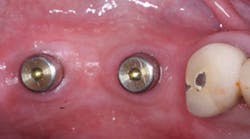Dental coding with Kyle: D6010—Surgical placement of implant body: Endosteal implant
It’s no secret that dental coding can be a tricky and frustrating experience. DAOMD editor Kyle Summerford explains different codes in his monthly Dental Coding with Kyle column in an effort to help alleviate some of the frustration for his fellow dental professionals.
This article first appeared in Dental Assisting & Office Manager Digest. To receive enlightening and helpful articles for assistants and office managers in this monthly e-newsletter, visit dentistryiq.com/subscribe.
This month I will review key understandings when coding for placement of an implant.
What to keep in mind
• The D6010 code is to be used for full-size implants only. Mini implants should be reported with code D6013.
• Implants are not typically covered by every dental insurance plan but might be covered under a patient’s medical insurance plan.
• When contacting a patient’s dental insurance company for a breakdown of benefits, be sure to ask if the patient has implant coverage.
• If the natural tooth was lost prior to the patient enlisting with his or her dental insurance company, there might be a missing tooth clause in effect. This will lead to a denial of benefits of the dental implant and any similar restoration.
• Surgical exposure with healing abutments should be billed to the insurance company separately.
• Reimbursement varies among insurance companies for the surgical exposure and/or healing caps, also known as D6011 Second Stage Implant Surgery. Most insurance plans will pay only for placement.
• If the patient does have implant coverage and has absorbed his or her annual maximum, the insurance company will not pay toward the implant procedure.
For the most current dental headlines, click here.
MORE CODING WITH KYLE ARTICLES:
Immediate denture (D5130) vs. interim complete denture
Bone grafts
What code to use for dental exam visit?









